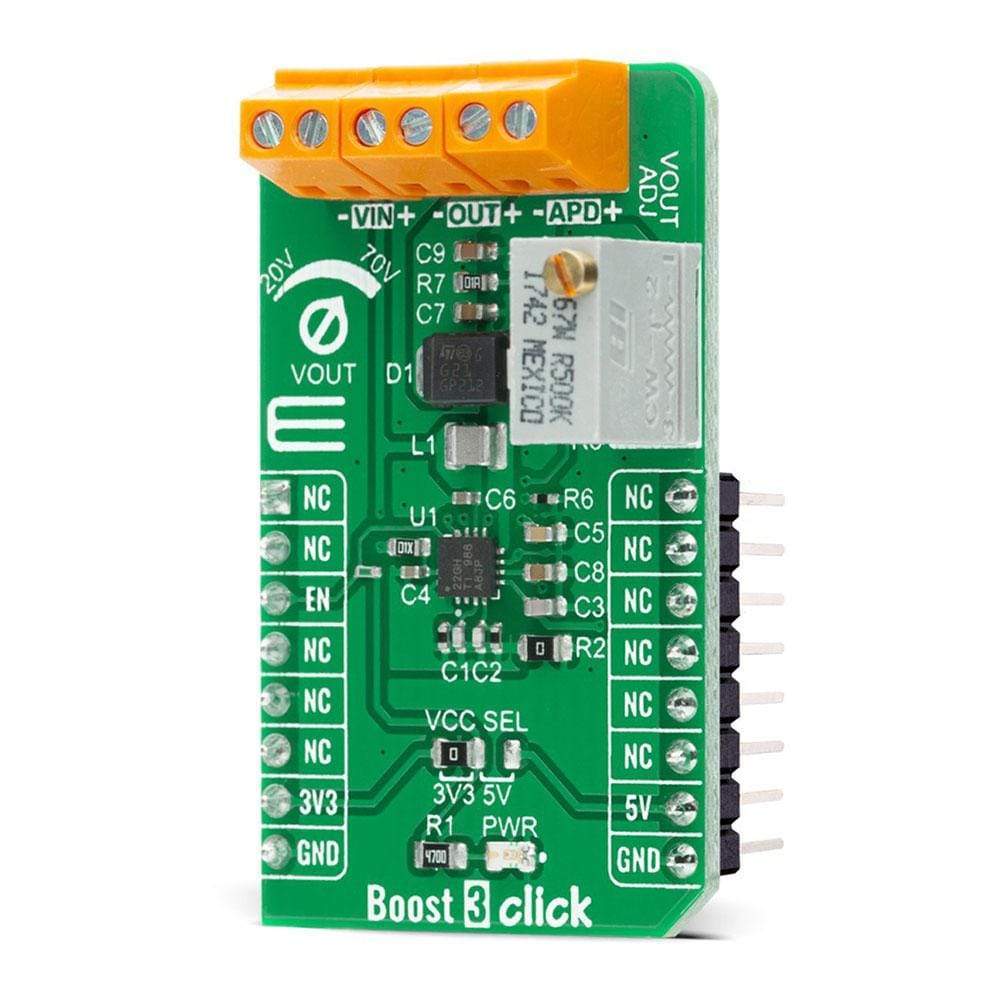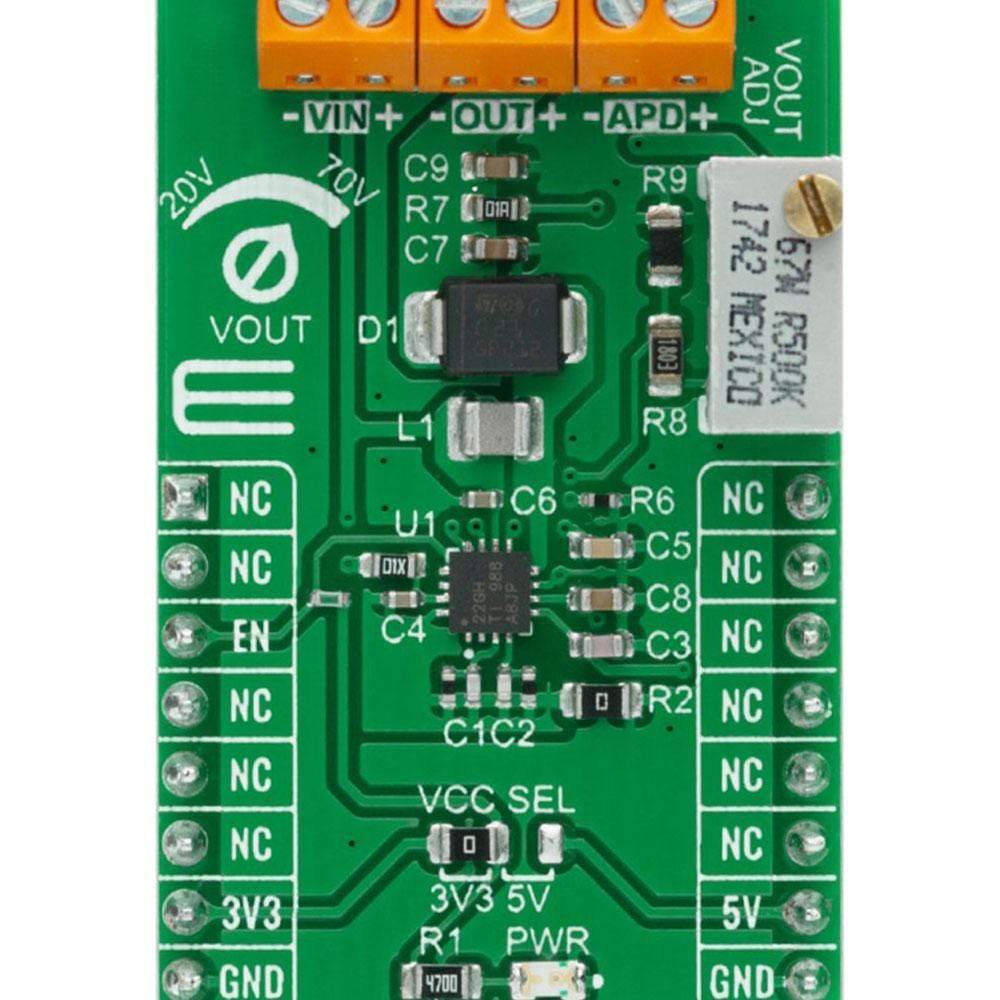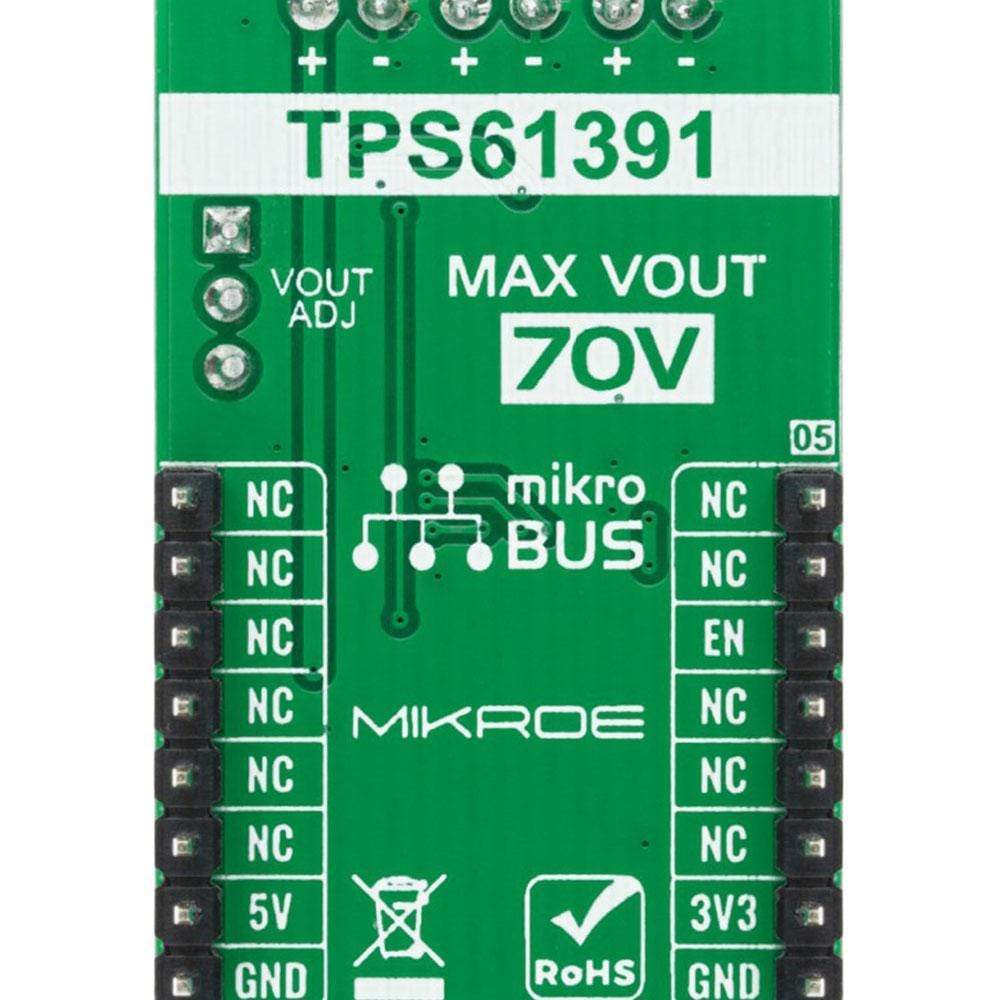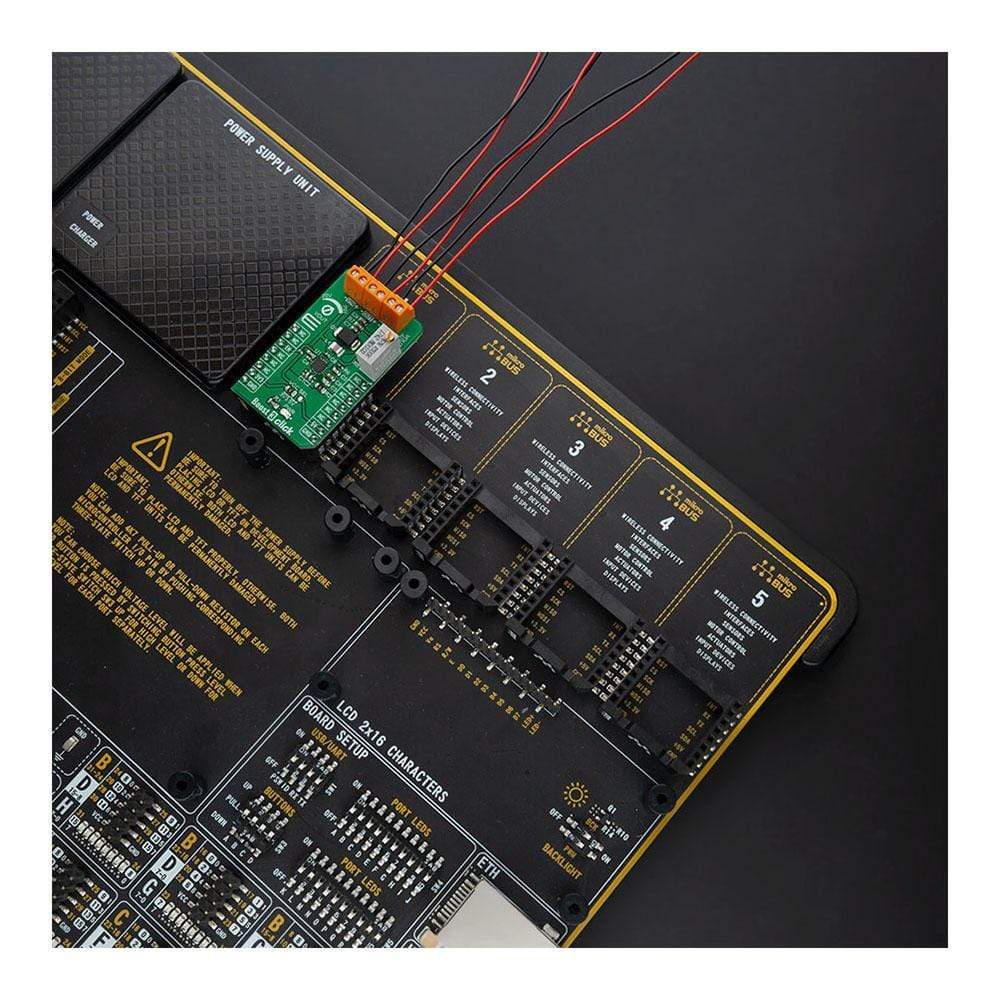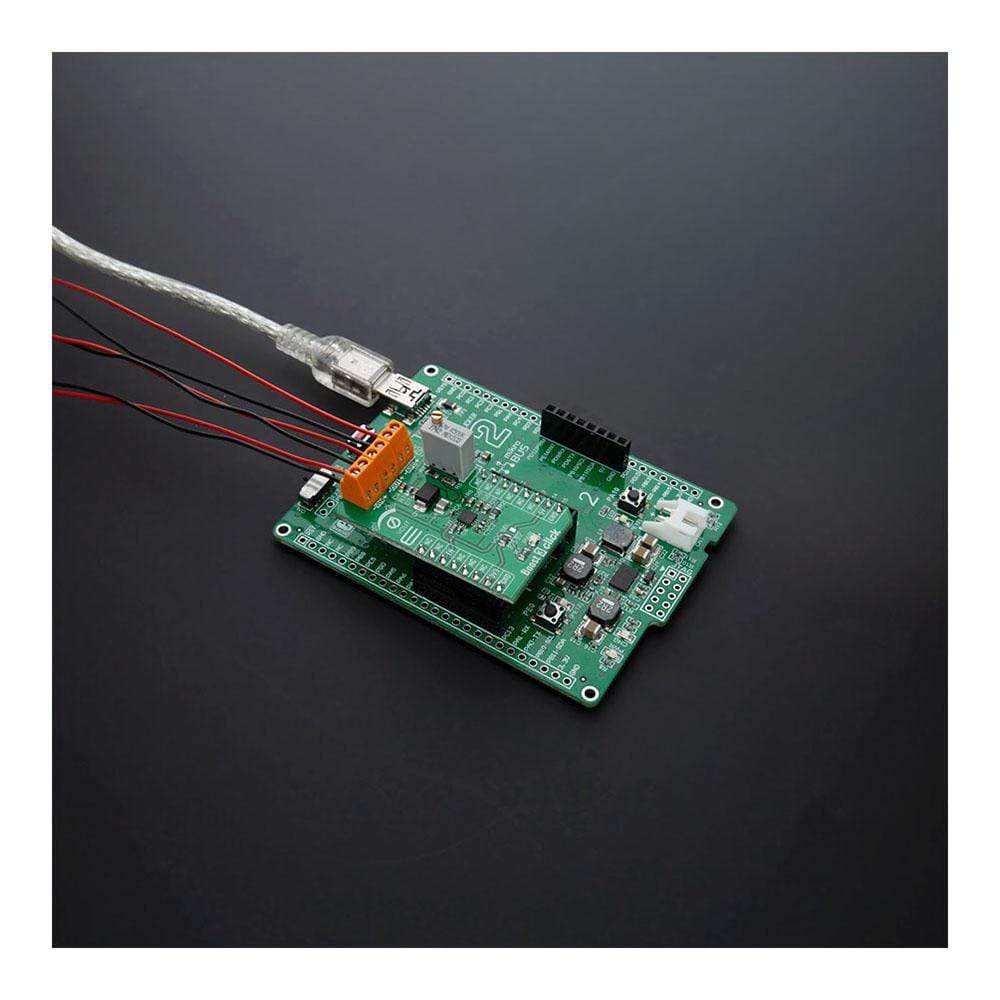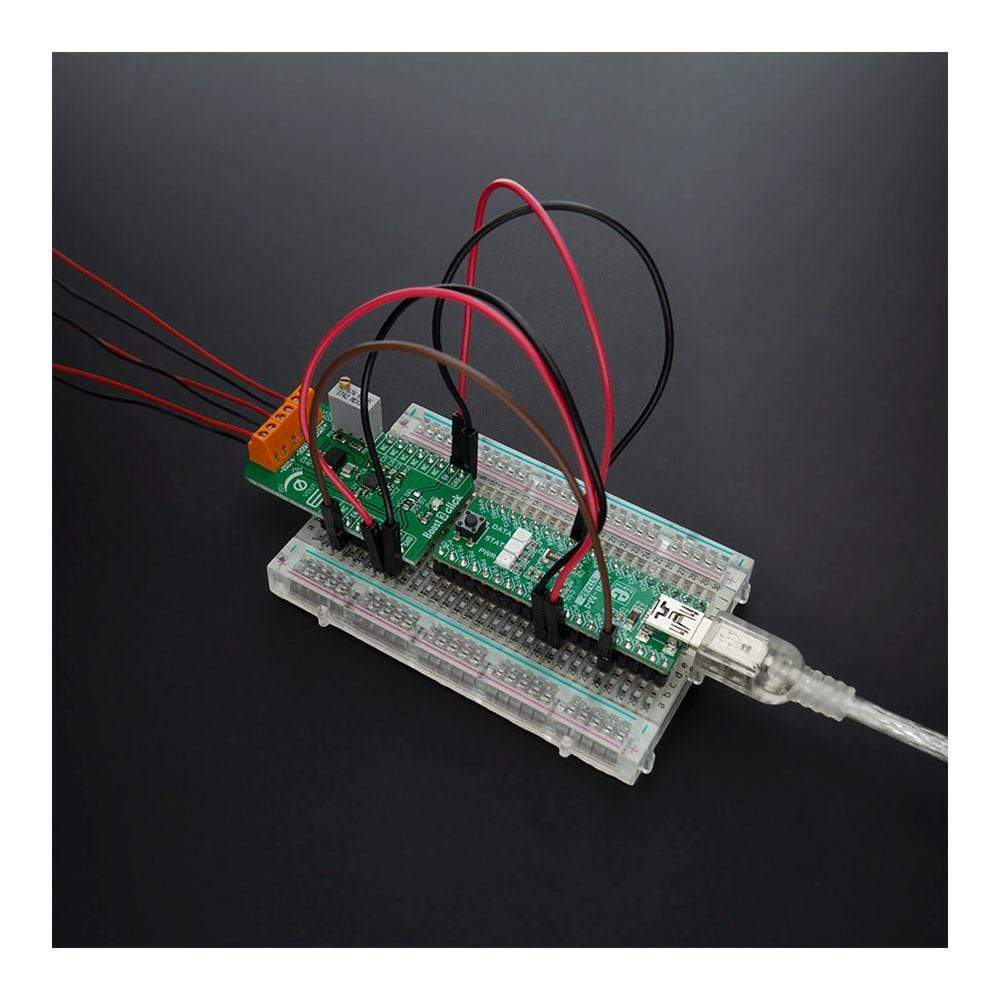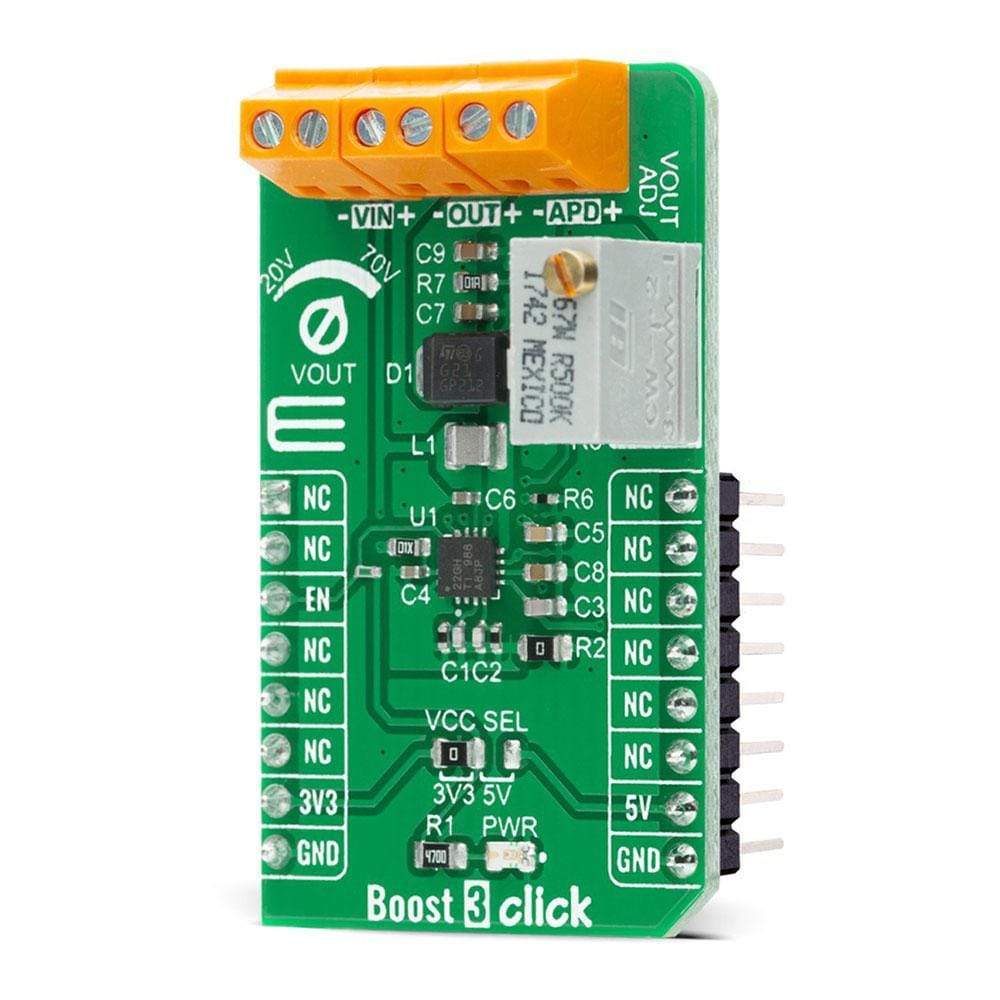

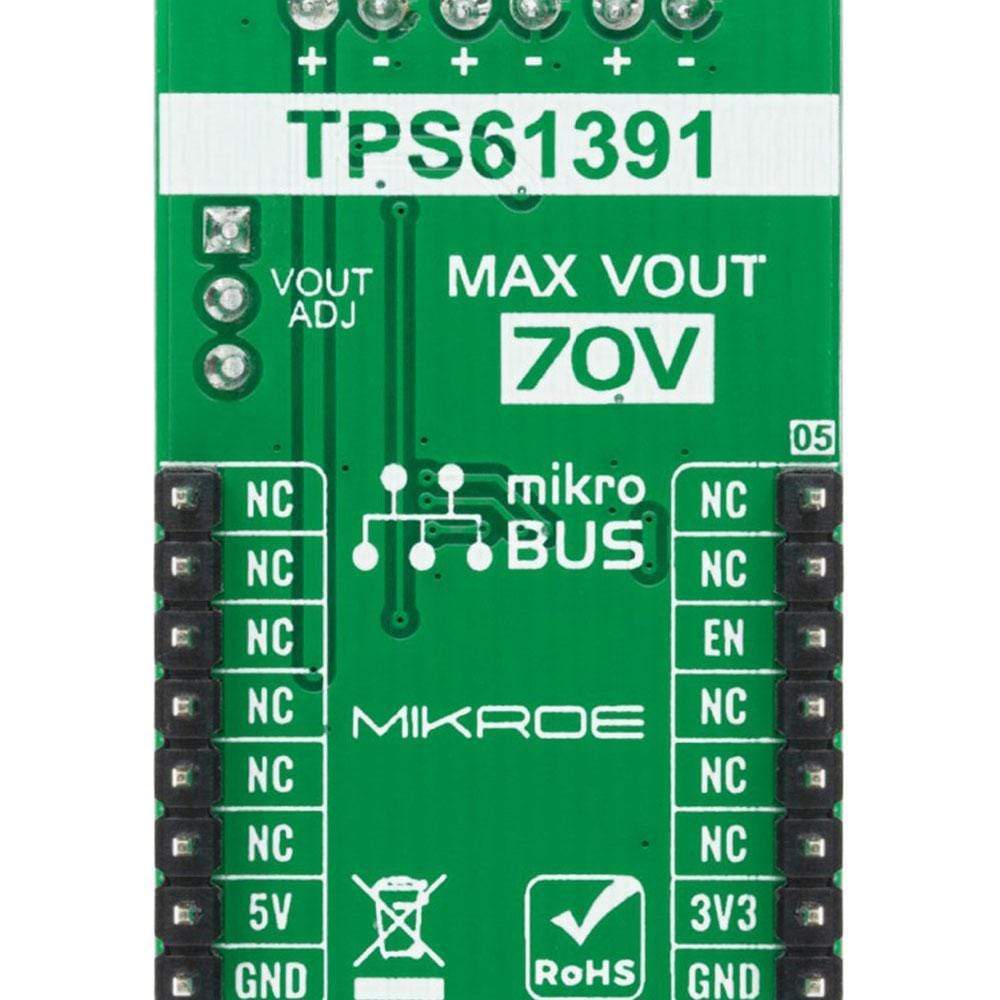
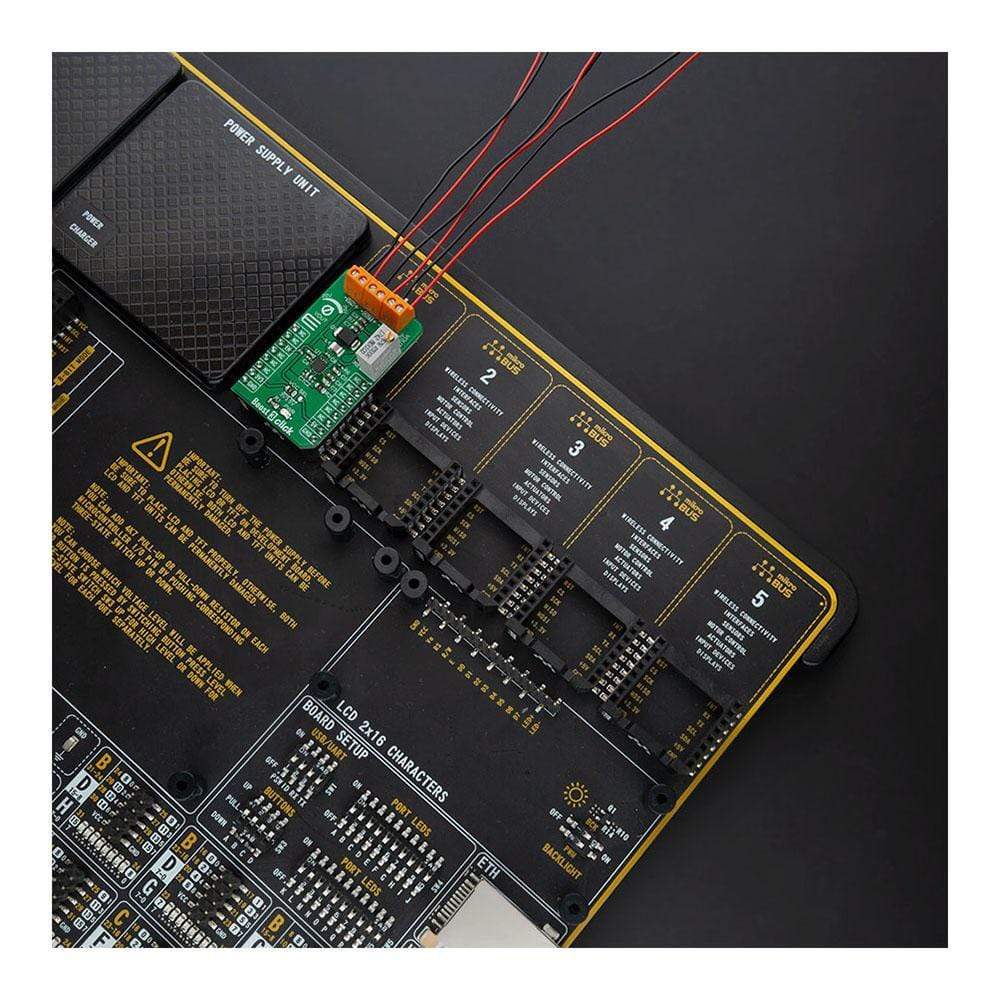
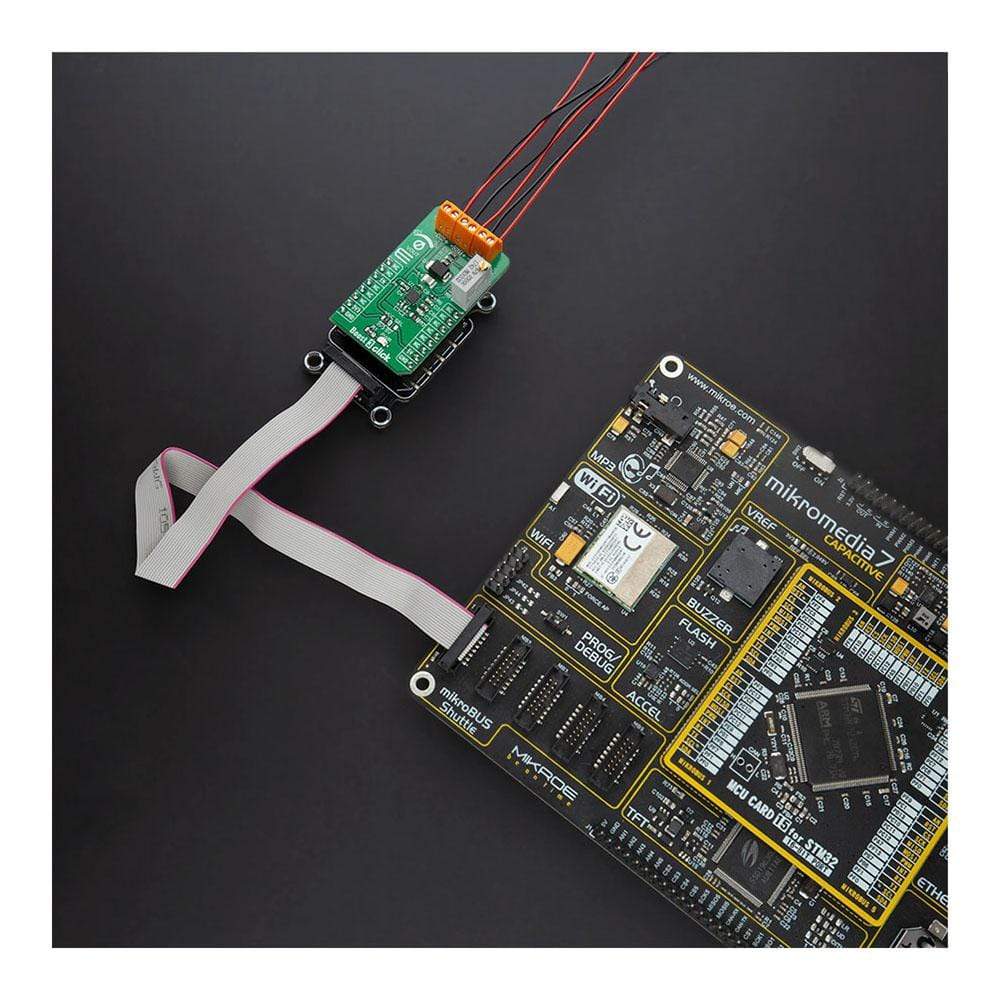
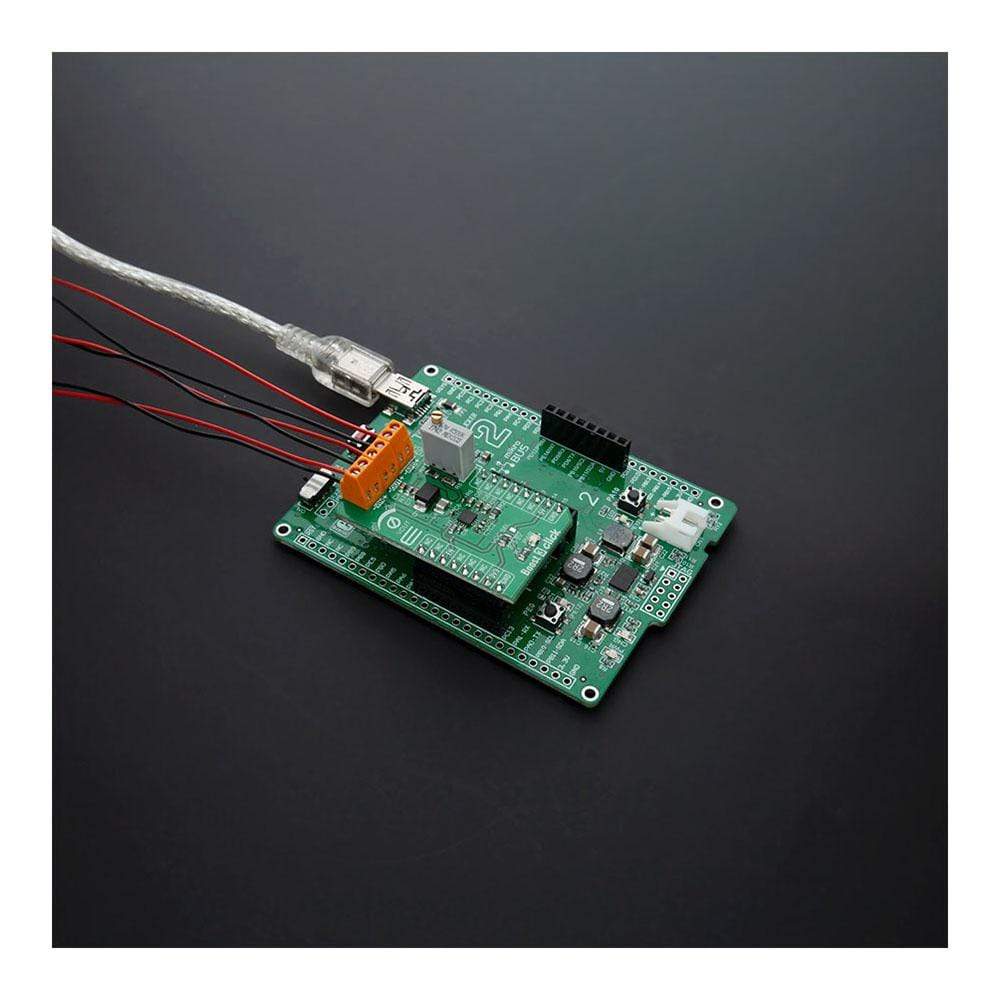
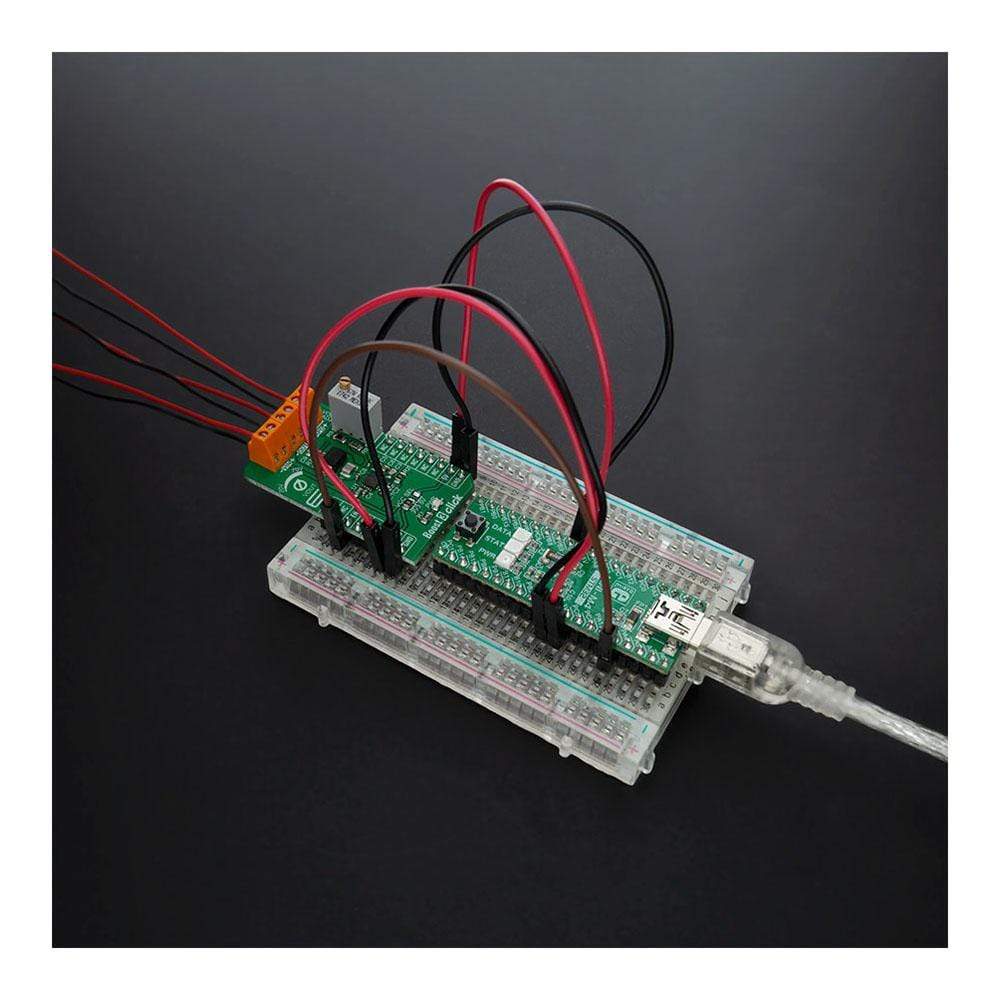
Overview
The Boost 3 Click Board™ is a compact add-on board that contains a boost converter with an integrated current mirror function. This board features the TPS61391, a 700-kHz pulse-width modulating (PWM) Step-Up converter with a 70V switch FET with an input voltage up to 5.5V from Texas Instruments. The TPS61391 includes an accurate current mirror, with two selectable gain options (1:5 or 4:5), and provides high optical-power protection with an additional FET in series with the APD power path, with the typical response time of 0.5µs. This Click Board™ is designed to be used for applications such as biasing and monitoring the avalanche photodiodes (APD) in the optical receivers, but it also can be used as a high voltage sensor supply or in battery-powered and automotive applications.
The Boost 3 Click Board™ is supported by a mikroSDK compliant library, which includes functions that simplify software development. This Click Board™ comes as a fully tested product, ready to be used on a system equipped with the mikroBUS™ socket.
Downloads
Le Planche à clic Boost 3™ est une carte complémentaire compacte qui contient un convertisseur boost avec une fonction miroir de courant intégrée. Cette carte comprend le TPS61391, un convertisseur élévateur à modulation de largeur d'impulsion (PWM) de 700 kHz avec un FET de commutation de 70 V avec une tension d'entrée jusqu'à 5,5 V de Texas Instruments. Le TPS61391 comprend un miroir de courant précis, avec deux options de gain sélectionnables (1:5 ou 4:5), et offre une protection de puissance optique élevée avec un FET supplémentaire en série avec le chemin d'alimentation APD, avec un temps de réponse typique de 0,5 µs. Cette Click Board™ est conçue pour être utilisée pour des applications telles que la polarisation et la surveillance des photodiodes à avalanche (APD) dans les récepteurs optiques, mais elle peut également être utilisée comme alimentation de capteur haute tension ou dans des applications alimentées par batterie et automobiles.
Le Planche à clic Boost 3™ est pris en charge par une bibliothèque compatible mikroSDK, qui comprend des fonctions qui simplifient le développement logiciel. Cette Click Board™ est un produit entièrement testé, prêt à être utilisé sur un système équipé du socket mikroBUS™.
| General Information | |
|---|---|
Part Number (SKU) |
MIKROE-4287
|
Manufacturer |
|
| Physical and Mechanical | |
Weight |
0.021 kg
|
| Other | |
Country of Origin |
|
HS Code Customs Tariff code
|
|
EAN |
8606027380617
|
Warranty |
|
Frequently Asked Questions
Have a Question?
Be the first to ask a question about this.

